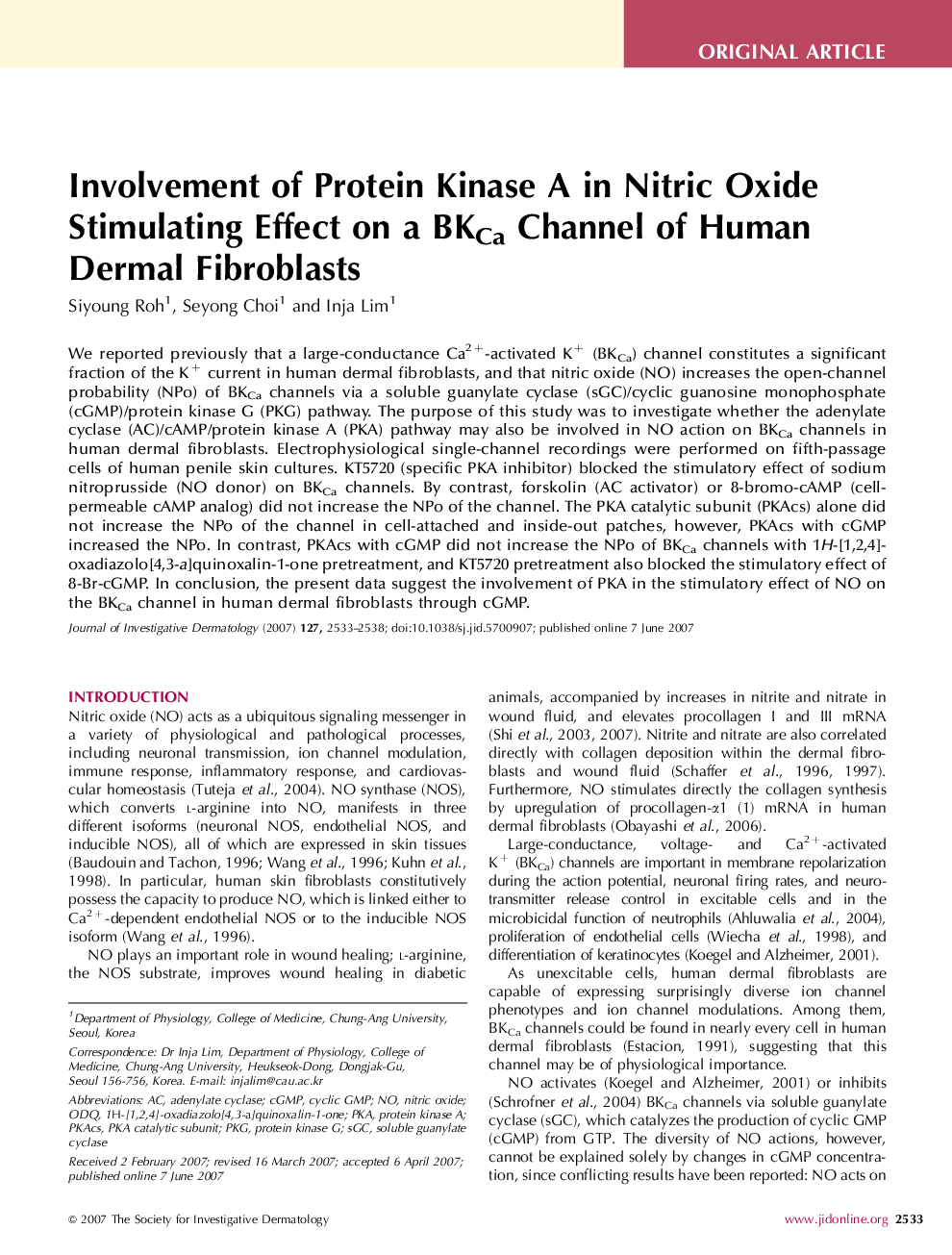| Article ID | Journal | Published Year | Pages | File Type |
|---|---|---|---|---|
| 3217334 | Journal of Investigative Dermatology | 2007 | 6 Pages |
Abstract
We reported previously that a large-conductance Ca2+-activated K+ (BKCa) channel constitutes a significant fraction of the K+ current in human dermal fibroblasts, and that nitric oxide (NO) increases the open-channel probability (NPo) of BKCa channels via a soluble guanylate cyclase (sGC)/cyclic guanosine monophosphate (cGMP)/protein kinase G (PKG) pathway. The purpose of this study was to investigate whether the adenylate cyclase (AC)/cAMP/protein kinase A (PKA) pathway may also be involved in NO action on BKCa channels in human dermal fibroblasts. Electrophysiological single-channel recordings were performed on fifth-passage cells of human penile skin cultures. KT5720 (specific PKA inhibitor) blocked the stimulatory effect of sodium nitroprusside (NO donor) on BKCa channels. By contrast, forskolin (AC activator) or 8-bromo-cAMP (cell-permeable cAMP analog) did not increase the NPo of the channel. The PKA catalytic subunit (PKAcs) alone did not increase the NPo of the channel in cell-attached and inside-out patches, however, PKAcs with cGMP increased the NPo. In contrast, PKAcs with cGMP did not increase the NPo of BKCa channels with 1H-[1,2,4]-oxadiazolo[4,3-a]quinoxalin-1-one pretreatment, and KT5720 pretreatment also blocked the stimulatory effect of 8-Br-cGMP. In conclusion, the present data suggest the involvement of PKA in the stimulatory effect of NO on the BKCa channel in human dermal fibroblasts through cGMP.
Related Topics
Health Sciences
Medicine and Dentistry
Dermatology
Authors
Siyoung Roh, Seyong Choi, Inja Lim,
